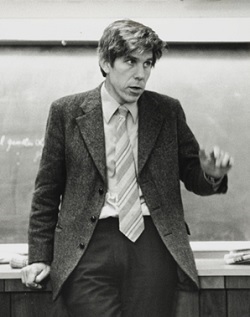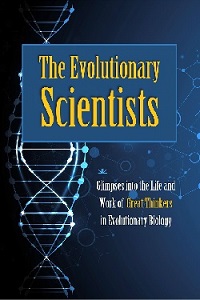|
TRANSLATE THIS ARTICLE
Integral World: Exploring Theories of Everything
An independent forum for a critical discussion of the integral philosophy of Ken Wilber
 David Christopher Lane, Ph.D.
Professor of Philosophy, Mt. San Antonio College Lecturer in Religious Studies, California State University, Long Beach Author of Exposing Cults: When the Skeptical Mind Confronts the Mystical (New York and London: Garland Publishers, 1994) and The Radhasoami Tradition: A Critical History of Guru Succession (New York and London: Garland Publishers, 1992). David Christopher Lane, Ph.D.
Professor of Philosophy, Mt. San Antonio College Lecturer in Religious Studies, California State University, Long Beach Author of Exposing Cults: When the Skeptical Mind Confronts the Mystical (New York and London: Garland Publishers, 1994) and The Radhasoami Tradition: A Critical History of Guru Succession (New York and London: Garland Publishers, 1992).If there's a singular topic Integral students need to be educated on it is evolutionary theory, given their frequent but uninformed use of the term "evolution". These short biographical chapters about evolutionary theorists have been written by different philosophy students of professor David Christopher Lane. (FV)
THE EVOLUTIONARY SCIENTISTS
Glimpses into the Life and Work of Great Thinkers in Evolutionary Biology
Coyne|
Crick|
Darwin|
Dawkins|
Diamond|
Dobzhansky|
Eldridge|
Gould|
Haldane|
Hamilton |
Lamarck|
Lovelock|
Mayr|
Mendel|
Monod|
Spencer|
Trivers |
Wallace |
Weismann |
Williams |
E.O. Wilson
William Donald HamiltonEmily ParkWilliam Donald Hamilton, also known as W.D. Hamilton, was born on August 1, 1936 in Cairo, Egypt. His father, Archibald Milne Hamilton, was a civil engineer stationed in Egypt when W.D. Hamilton was born, but his family moved back to Kent, England where Hamilton grew up and obtained his education. After developing a passion for insects and evolution, he pursued multiple routes of education. As an undergraduate, he pursued the study of genetics at the University of Cambridge and then pursued graduate study at the University College London and the London School of Economics. After finishing his studies, he focused on the educational field working as a lecturer at Imperial College in 1964. In 1977, he became a professor and curator at the Museum of Zoology at the University of Michigan. In 1984, he started his last occupation as a research professor at the Royal Society at Oxford University.  William Donald Hamilton Hamilton was an outstanding evolutionist because of his ability to connect mathematical reasoning to the evolutionary problems that he studied. His most widely accepted and known theory is his mathematical equation known as Hamilton's Rule. His rule, commonly found in evolutionary textbooks, seeks to explain inclusive fitness while predicting the evolution of social behavior under the factors of relatedness, benefits, and cost. In order to understand inclusive fitness, the components of it must be explained first. Fitness, in general, regards to an individual's ability to survive and pass on its genes. There are two types of fitnesses, classified as indirect and direct. Direct fitness refers to the measure of reproductive success through the number of offspring an individual produces whereas indirect fitness refers to the genetic success of an individual based off of the number of relatives that are present. The combination of the two fitnesses forms inclusive fitness. Inclusive fitness serves to explain altruism, a behavior where individuals increase the fitness of another individual, typically relatives, at the cost of their own lives serving as a detriment to themselves. Altogether, Hamilton's Rule and altruism explain Kin Selection. Kin Selection can be defined as the increase in individuals' inclusive fitness when they engage in altruistic behavior to enhance the reproductiveness of their relatives. Hamilton's rule states that rB>C. The R represents the relatedness of the individuals, the B represents the benefit that is received by one of the individuals, and the C represents the cost that is faced by the other individual who is also known as the altruist. The Belding's Ground Squirrel can be used to better describe this theory and how Hamilton's Rule works in the real-world setting. The Belding's Ground Squirrels use altruistic behavior of alarm calls to alert their nearby relatives of predators. The individuals that make the alarm call are serving as a detriment to themselves at the benefit of saving their relatives. Making an alarm sound puts the ground squirrel's life in danger, but they are willing to do so to keep their relatives alive even at the cost of losing their own. The relatedness (r) in the situation is the ground squirrel's and its nearby relatives. The benefit (B) is that the relatives will hear the call that there is a predator nearby and will find a way to protect themselves. The cost (C) is that the one individual who is giving out the call is putting their life in danger for the predators to find them more easily. Essentially, one squirrel is giving up his or her life so that their relatives can continue to live. In short, the altruistic behavior of alarm calling boosts the inclusive fitness of the Belding's Ground Squirrel because although one puts its life at risk, the chances of its family members to survive and reproduce are higher. This plays into the social evolution because it was believed that these behaviors will be passed on. However, Hamilton's Rule has skeptics because it relies on what is already occurring, but cannot be used to predict how every species will react. Hamilton also developed an interest in the evolution of sex and sex ratios. He was fascinated in why individuals engage in sexual reproduction when asexual reproduction seemed much more advantageous. Hamilton opened a new field of discoveries to understand this question. He hypothesized and furthered discovered that sexual reproduction was an adaptation formed to resist parasites that developed faster than their hosts. Sexual reproduction was necessary for genetic recombination to continually make defenses one step ahead of the parasites and diseases. Ronald Fisher's sex ratio theory inspired Hamilton where he predicted that selection will lead to an equal ratio of 1:1 for males and females. He predicted that if the two sexes were equally costly to make, then the sex ratio should remain equal. However, if one sex is more costly to make than the other, then the less costly sex will be produced more. Hamilton furthered this idea with his phenomenon called local mate competition because he realized that Fisher's theory could not be applied to every population. Hamilton predicts in his phenomenon that in certain populations, there are certain sex bias ratios. When the population has a female sex bias ratio, more total offspring can be reproduced versus when the sex bias ratio focuses on males, there is a higher chance of genes being passed on through mating. He concluded that in undivided populations, the 1:1 ratio remains true from Fisher's predictions, but in a divided population, female biased sex ratios are favorable so that more offspring can be produced. Hamilton expressed how the 1:1 ratio was not applicable in every case where the sex bias ratios are dependent on the environment. Intrigued by the controversial beginnings of HIV, W.D. Hamilton ventured to Congo to explore the disease himself. While in Congo, he contracted malaria which caused multiple complications to his organs. He was rushed back to London, but died at the hospital on March 7, 2000 after he fell into a coma. Hamilton has left behind three daughters and has encouraged many to further discover the unknown about evolution. Further Reading1. Narrow Lands of Gene Land, volume one: Evolution of Social Behaviour, Spektrum Academic Publishers (January 8, 1998) 2. Narrow Lands of Gene Land, volume two: Evolution of Sex, Oxford University Press; 1 edition (January 17, 2002) 3. Narrow Lands of Gene Land, volume three: Last Words, Oxford University Press; 1 edition (January 12, 2006)
  
MSAC Philosophy Group
The theory of evolution has a long history. However, it was not until Charles Darwin and Alfred Russel Wallace discovered that the wide variety of species we presently see were largely the result of natural selection did evolutionary studies have a solid, scientific basis. In the past one hundred and sixty years, a number of eminent biologists have contributed to our understanding of how complex life forms emerged from simpler, more rudimentary ones.
Comment Form is loading comments...
|